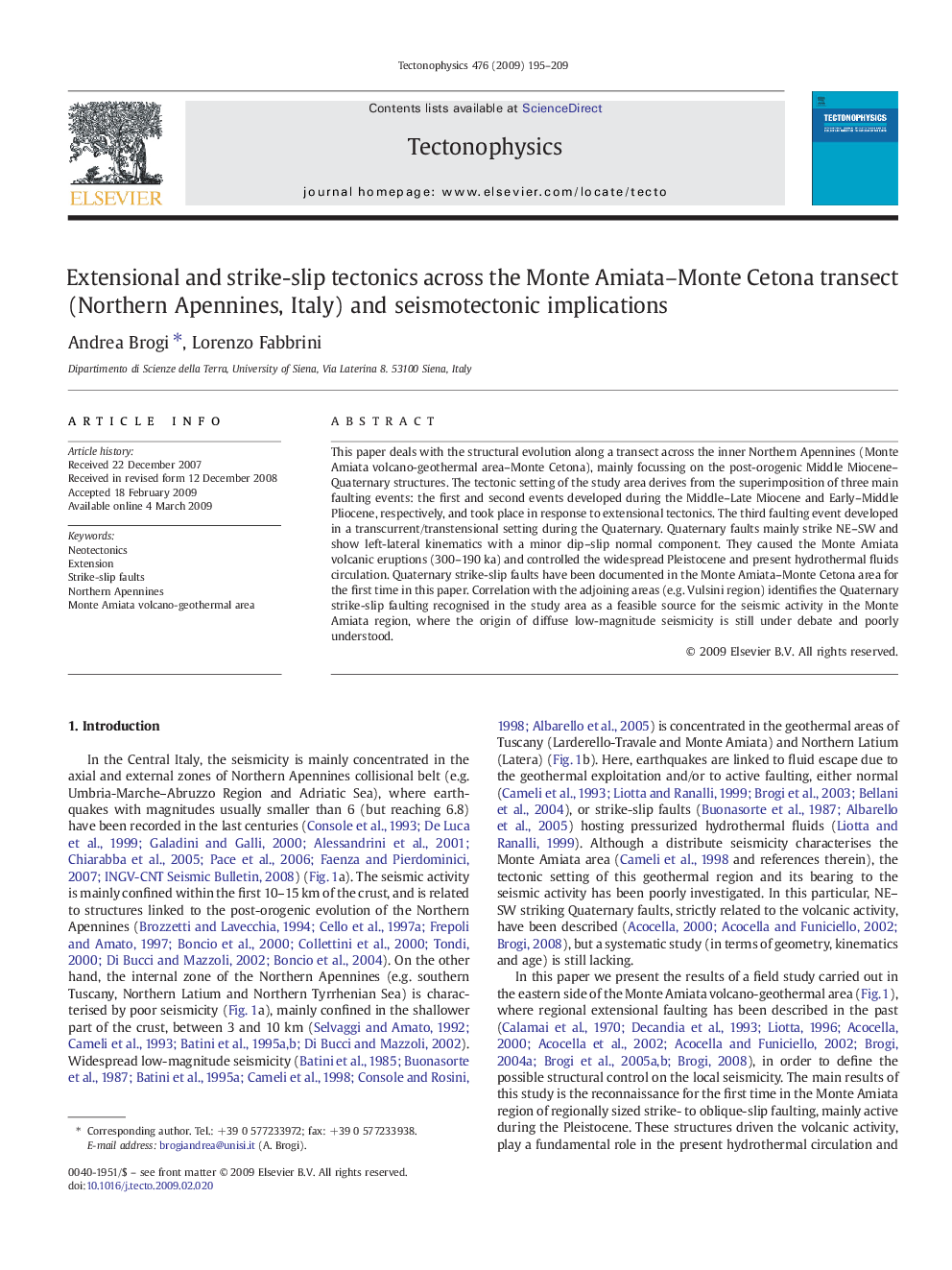| Article ID | Journal | Published Year | Pages | File Type |
|---|---|---|---|---|
| 4694031 | Tectonophysics | 2009 | 15 Pages |
This paper deals with the structural evolution along a transect across the inner Northern Apennines (Monte Amiata volcano-geothermal area–Monte Cetona), mainly focussing on the post-orogenic Middle Miocene–Quaternary structures. The tectonic setting of the study area derives from the superimposition of three main faulting events: the first and second events developed during the Middle–Late Miocene and Early–Middle Pliocene, respectively, and took place in response to extensional tectonics. The third faulting event developed in a transcurrent/transtensional setting during the Quaternary. Quaternary faults mainly strike NE–SW and show left-lateral kinematics with a minor dip–slip normal component. They caused the Monte Amiata volcanic eruptions (300–190 ka) and controlled the widespread Pleistocene and present hydrothermal fluids circulation. Quaternary strike-slip faults have been documented in the Monte Amiata–Monte Cetona area for the first time in this paper. Correlation with the adjoining areas (e.g. Vulsini region) identifies the Quaternary strike-slip faulting recognised in the study area as a feasible source for the seismic activity in the Monte Amiata region, where the origin of diffuse low-magnitude seismicity is still under debate and poorly understood.
